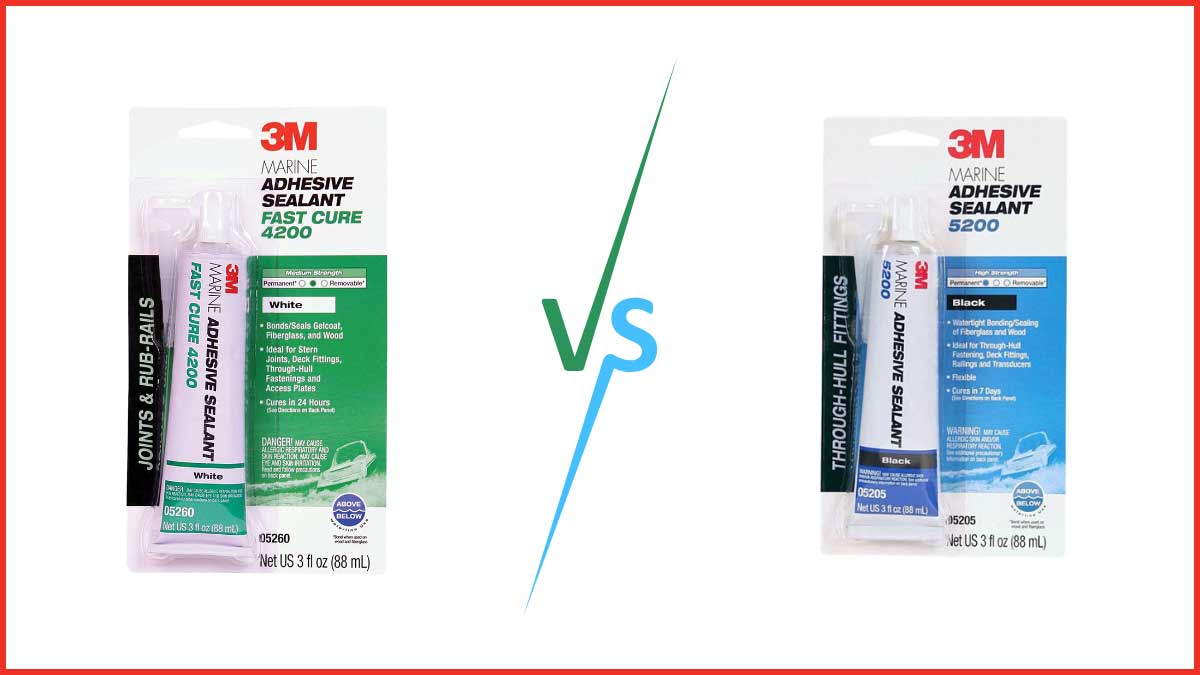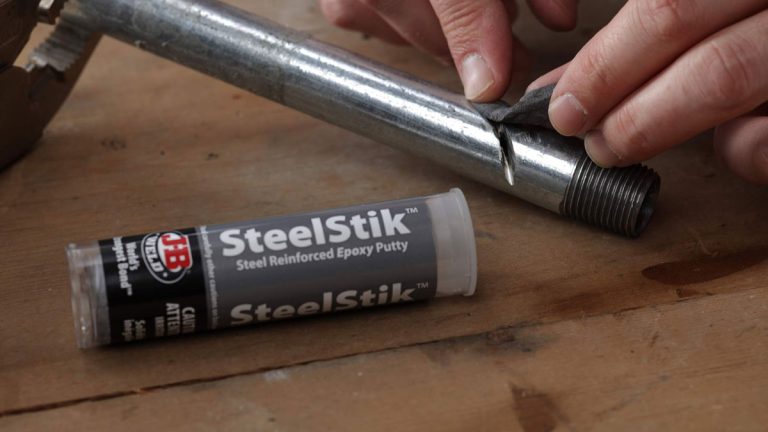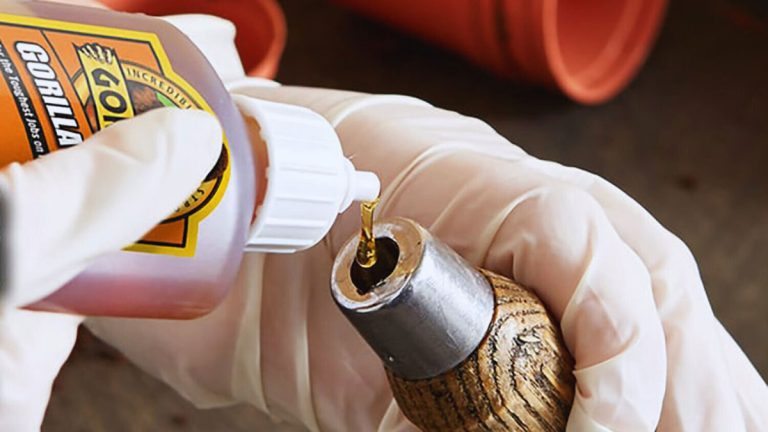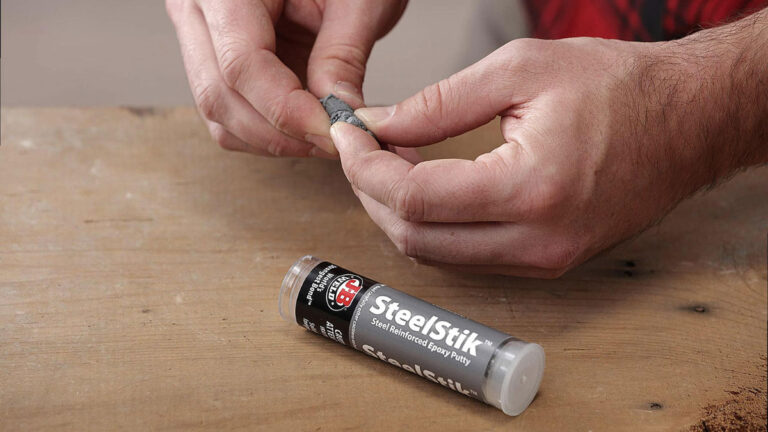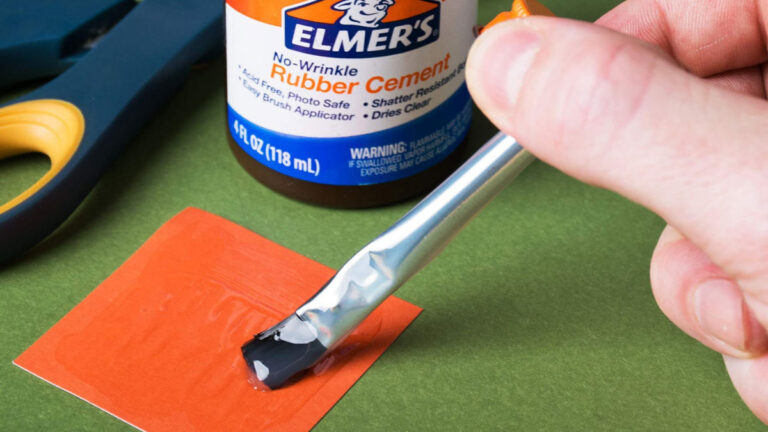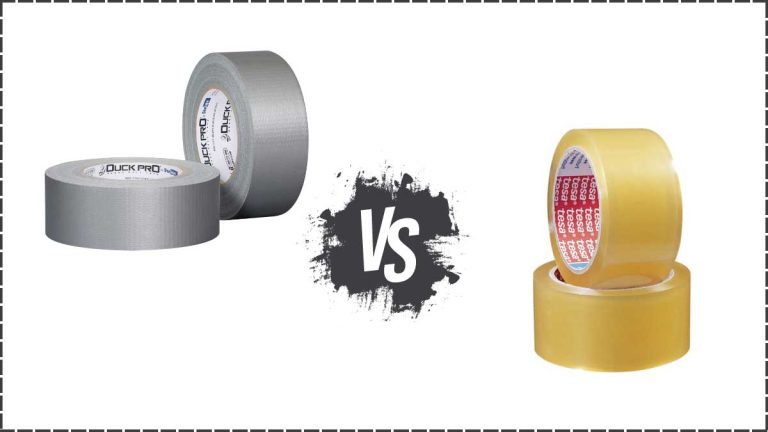3M 4200 vs 5200: Choosing the Right Marine Sealant
Choosing the right marine adhesive sealant can be daunting, especially when you’re torn between 3M’s popular 4200 and 5200 options. Both products are renowned for their durability and strong bonding capabilities, but they serve different purposes and situations. Understanding the key differences between these two can save you time, money, and potential headaches down the line.
In this text, you’ll discover the unique properties, advantages, and ideal applications for both 3M 4200 and 5200. Whether you’re tackling a quick repair or a long-term project, knowing which sealant to use will ensure your marine endeavors are successful and long-lasting. Immerse to make an well-informed choice that best suits your needs.
Key Takeaways
- 3M 4200 vs 3M 5200: Understand the unique properties, advantages, and ideal applications of both marine adhesive sealants to make an informed choice for your projects.
- 3M 4200: Best for semi-permanent installations; offers easier disassembly and faster curing time of 24-48 hours, but less adhesive strength compared to 5200.
- 3M 5200: Ideal for permanent installations with outstanding adhesive strength; high durability and flexibility, but longer curing time of 5-7 days.
- Performance Comparison: 3M 4200 is more versatile and allows for easier removal, whereas 3M 5200 offers stronger, permanent bonds suited for high-stress areas.
- Pros and Cons: Evaluate the pros and cons of each product based on curing time, ease of disassembly, strength, and durability to match specific project needs.
- User Experiences: Feedback highlights 3M 4200 for quicker projects due to its faster cure time and ease of removal, while 3M 5200 is praised for permanent, high-stress applications.
Overview Of 3m 4200 And 5200
3M 4200 and 3M 5200 are marine adhesive sealants with specific properties and uses. Understanding their differences ensures successful marine projects.
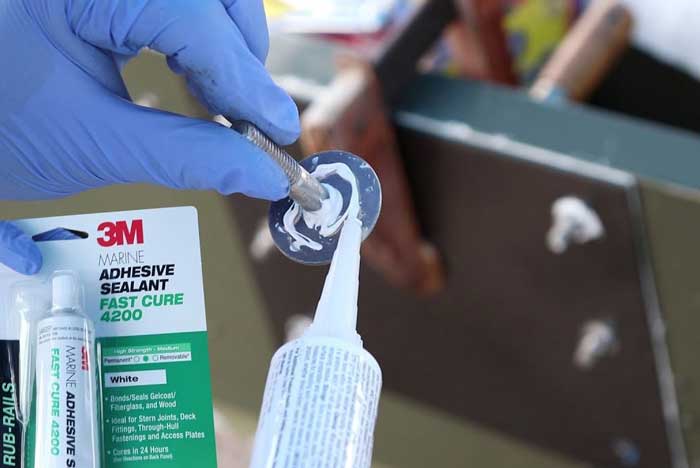
Key Features
3M 4200
- Waterproofing: Forms a watertight seal on joints and boat hardware, both above and below the waterline.
- Removability: Designed for easy disassembly of parts, simplifying future hardware removal.
- Flexibility: Remains flexible, accommodating structural movement.
- Curing Time: Fully cures within 24 to 48 hours.
- Adhesion: Exhibits good bonding properties but less adhesive strength compared to 5200.
3M 5200
- Waterproofing: Provides a robust, watertight seal above and below the waterline, exhibiting excellent resistance to saltwater.
- Permanence: Functions as a permanent adhesive, making it tough to remove without damaging bonded materials.
- Adhesion: Offers superior adhesive properties, maintaining strength over time.
- Curing Time: Requires 5 to 7 days to cure completely.
- Boat Decks: Both 4200 and 5200 ensure secure bonding of boat decks, with 5200 providing a more permanent solution.
- Underwater Fixtures: Use 4200 for removable fixtures; 5200 suits permanent installations.
- General Marine Repairs: Both sealants are ideal for various repairs, with 4200 being more suitable for temporary fixes and 5200 for long-term repairs.
Understanding these properties can help you select the right sealant for your marine projects.
Performance Comparison
Understanding the performance of 3M 4200 and 3M 5200 sealants helps you make the right choice for your marine projects.
Strength and Durability
When evaluating Strength And Durability, your project needs dictate the best option:
- 3M 4200: Provides a strong, yet removable bond, ideal if you may need to disassemble hardware in the future. Though it offers a robust seal, its tensile strength is lower than 3M 5200.
- 3M 5200: Known for high strength and durability, forming a permanent bond that’s stronger than fiberglass. It’s ideal for high-stress areas, especially below the waterline.
Flexibility and Curing Time
Considering Flexibility And Curing Time is crucial for your marine project:
- 3M 4200: Retains flexibility after curing, accommodating structural movement though not as flexible as 3M 5200. Cures in 24-48 hours, making it suitable for quicker projects.
- 3M 5200: Remains highly flexible after curing, suitable for structural movement without seal compromise. Cures in 5-7 days, making it ideal for long-term applications.
Comparative Data
A clear comparison between the two sealants:
| Property | 3M 4200 | 3M 5200 |
|---|---|---|
| Bond Type | Removable | Permanent |
| Tensile Strength | Lower | Higher |
| Flexibility | Moderate | High |
| Curing Time | 24-48 hours | 5-7 days |
| Suitable Applications | Removable fixtures, temporary repairs | Permanent installations, long-term repairs |
This comparison table allows for a quick evaluation to decide which sealant better suits your needs.
Summary
By recognizing the distinct properties of 3M 4200 and 3M 5200, you can choose the most suitable sealant. For removable bonds and quicker projects, opt for 3M 4200. For strong, permanent bonds in high-stress areas, 3M 5200 is the preferred choice.
Pros And Cons
Comparing the pros and cons of 3M 4200 and 5200 helps in making an well-informed choice for your marine projects. Each product has distinct advantages and disadvantages that cater to specific needs. Below, we break down the pros and cons of each.
Pros of 3M 4200
- Faster Cure Time: 3M 4200 cures faster than 3M 5200, typically within 24 to 48 hours, making it ideal for time-sensitive projects.
- Easier Disassembly: Formulated to allow for future disassembly, 3M 4200 makes it easier to remove hardware without damaging surfaces.
- Versatility: Suitable for sealing joints and boat hardware both above and below the waterline.
- Less Permanent: Less hard and permanent than 3M 5200, reducing the risk of surface damage during removal.
Cons of 3M 4200
- Weaker Adhesion: Not as strong as 3M 5200; may not bond well to materials like aluminum and certain plastics.
- Less Suitable for Structural Movement: Does not accommodate as much structural movement as 3M 5200, which can be a drawback in specific applications.
- Picks Up Dirt: Tends to pick up dirt easily, affecting its appearance and cleanliness.
Pros of 3M 5200
- Superior Adhesion: Provides a robust, long-lasting bond with outstanding tensile strength, making it ideal for permanent installations.
- High Durability: Highly resistant to weathering, saltwater, and other harsh marine conditions, ensuring long-term performance.
- Allows for Structural Movement: Offers flexibility that can accommodate structural movement and vibrations, making it suitable for high-stress areas.
Cons of 3M 5200
- Longer Cure Time: Takes significantly longer to cure, often requiring 5 to 7 days, which can be inconvenient for urgent projects.
- Permanent Bond: Creates a very strong, permanent bond that can be problematic if you need to disassemble parts later.
- Difficult Removal: The permanent nature makes it challenging to remove without causing damage to surfaces.
| Feature | 3M 4200 | 3M 5200 |
|---|---|---|
| Cure Time | 24 to 48 hours | 5 to 7 days |
| Disassembly | Easy | Difficult |
| Versatility | Joints & hardware above/below waterline | Primarily permanent installs |
| Adhesion Strength | Adequate but weaker | Superior, high tensile strength |
| Structural Movement | Limited | Flexible |
| Dirt Resistance | Easily picks up dirt | Better resistance |
| Durability | Moderate | High |
Understanding these pros and cons is crucial for determining which adhesive sealant best suits your project’s requirements. For quick, less-permanent installs, 3M 4200 is generally preferred, while 3M 5200 is ideal for permanent, high-stress applications.
Best Use Cases
When considering 3M 4200 and 5200 marine adhesives, knowing each one’s best applications helps you make an well-informed choice. While both products excel in marine environments, their different properties suit specific needs.
When To Choose 3M 4200
3M 4200 is versatile, excelling in applications requiring both flexibility and future disassembly.
- Above and Below Waterline: Ideal for sealing and bonding both above and below the waterline.
- Semi-Permanent Installations: Suitable for installations where you may need to disassemble parts later.
- General Purpose Sealing and Bonding: Perfect for tasks like deck to hull bonding, and bonding wood to the superstructure.
- Removable: Allows easier disassembly, making it a better choice for non-permanent fixtures.
When To Choose 3M 5200
3M 5200 provides excellent durability and is best for permanent, high-stress applications.
- Permanent Installations: Best for installations where parts are not expected to be removed. It forms a very strong, permanent bond.
- High-Stress Areas: Exceptional for long-term repairs and areas that undergo significant stress or movement.
- Superior Adhesiveness: Known for its robust watertight seal, making it ideal for creating durable, long-lasting bonds.
Comparison Table
Below is a summary of the use cases for 3M 4200 and 5200:
| Feature | 3M 4200 | 3M 5200 |
|---|---|---|
| Use Case | Both above and below waterline | Permanent, high-stress areas |
| Installation Type | Semi-permanent | Permanent |
| Removal Ease | Easy | Difficult |
| Curing Time | 24-48 hours | 5-7 days |
By understanding these distinctions, you can choose the right adhesive for your marine projects, ensuring both effectiveness and efficiency.
User Experiences And Reviews
Users have shared their experiences with the 3M 4200 and 5200 adhesive sealants. This section summarizes their feedback, providing insights into each product’s strengths and weaknesses based on user reviews.
Common Feedback For 3M 4200
Removability: 3M 4200 is considered semi-permanent, making it easier to remove compared to 5200. Users find this ideal for applications where disassembly may be needed.
Flexibility: It stays flexible after curing, which is useful for sealing applications exposed to movement or stress. For instance, sealing deck seams where expansion and contraction occur.
Bonding Strength: The bonding strength is adequate, though not as strong as 5200. It’s often recommended for general-purpose sealing and bonding above and below the waterline, such as sealing hatches or portholes.
Curing Time: It cures relatively quickly, with a tack-free time around 2 hours and full cure in 24 hours. This faster curing time appeals to users who require quicker project turnaround.
Common Feedback For 3M 5200
Adhesive Strength: 3M 5200 is praised for its superior adhesive properties, making it suitable for applications requiring a robust bond, like hull-to-deck joints.
Durability: Users highlight the product’s durability. Once it cures, it forms a permanent bond capable of withstanding harsh marine environments, including constant water exposure and heavy stress areas.
Curing Time: While its curing time is significantly longer—5 to 7 days—it offers a stronger bond. Users recommend it for long-term projects where strength is prioritized over curing speed.
Conclusion
Choosing between 3M 4200 and 5200 depends on your project’s specific needs. If you require a sealant that’s easy to remove and cures quickly, 3M 4200 is your go-to option. It’s perfect for temporary repairs and applications that might need future disassembly.
On the other hand, if you’re looking for a strong, permanent bond for high-stress areas, 3M 5200 is the superior choice. Its robust adhesive properties and durability make it ideal for long-term marine projects, even though the longer curing time.
Understanding the unique properties and applications of both sealants ensures you make the right decision for your marine projects. Whether you need flexibility and quick curing or long-lasting strength, 3M has a solution tailored to your needs.
Frequently Asked Questions
How do I remove 3M 4200 from my hands?
To remove 3M 4200 from your skin, wash with plenty of soap and water. If skin irritation or a rash occurs, seek medical advice. Remember to wash any contaminated clothing before reuse.
At what temperature can I apply 3M 4200?
Avoid using 3M 4200 at temperatures above 190°F (88°C) or below 40°F (4°C). For best results, apply between 40°F and 100°F (4°C to 38°C).
Can 3M 4200 be sanded once cured?
Yes, cured 3M 4200 can be removed mechanically using a knife, razor blade, piano wire, or a sanding device.
What’s the primary difference between 3M 4200 and 5200?
3M 5200 offers superior adhesive properties and forms a permanent bond, whereas 3M 4200 provides a removable bond and cures faster.
What are the main uses of 3M 4200?
3M 4200 is ideal for applications requiring future disassembly, such as bonding wood and fiberglass parts together temporarily.
Why choose 3M 5200 over 3M 4200?
Choose 3M 5200 for projects needing a strong, permanent bond and superior durability, suitable for high-stress marine environments.
How long does 3M 4200 take to cure?
3M 4200 cures within 24 to 48 hours, making it suitable for quicker projects.
Is 3M 5200 suitable for long-term applications?
Yes, 3M 5200 is highly durable and flexible, making it suitable for long-term and high-stress applications. However, it has a longer curing time of 5 to 7 days.
Can I use 3M 4200 for waterproofing?
Yes, 3M 4200 has excellent waterproofing capabilities, making it suitable for various marine sealing tasks.
What are the drawbacks of using 3M 4200?
The primary drawbacks of 3M 4200 are its weaker adhesion compared to 3M 5200 and its limited structural movement capabilities.

